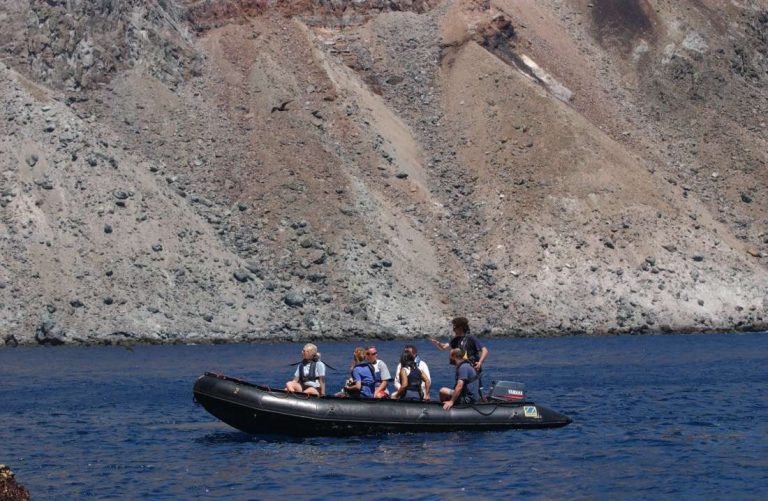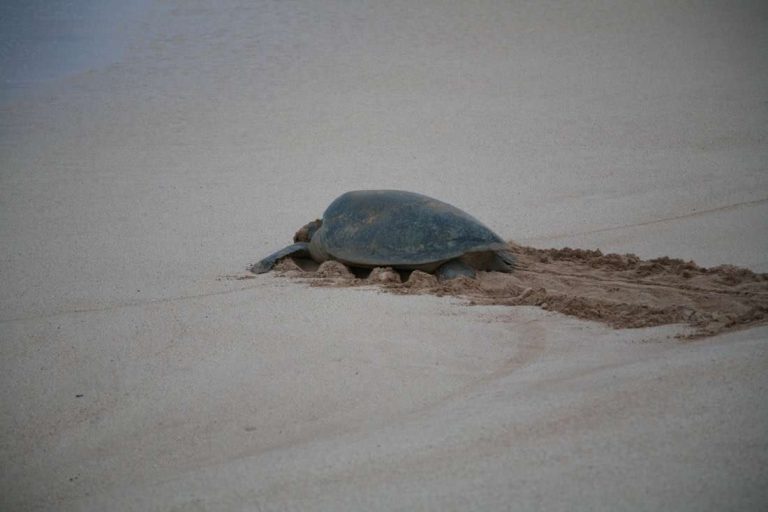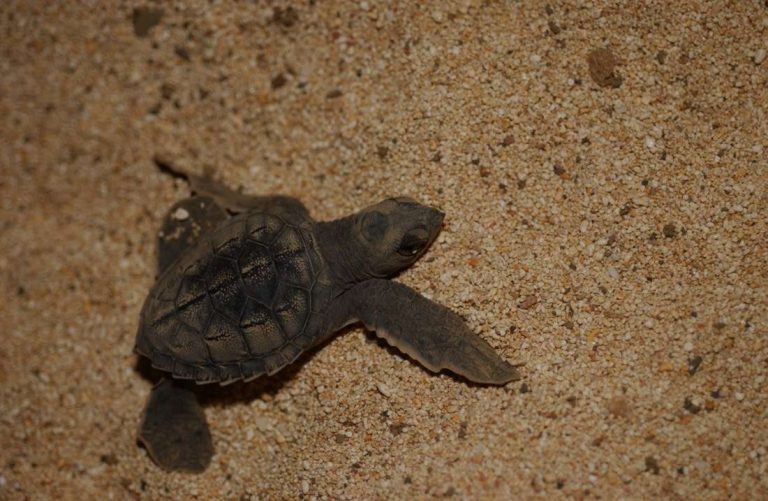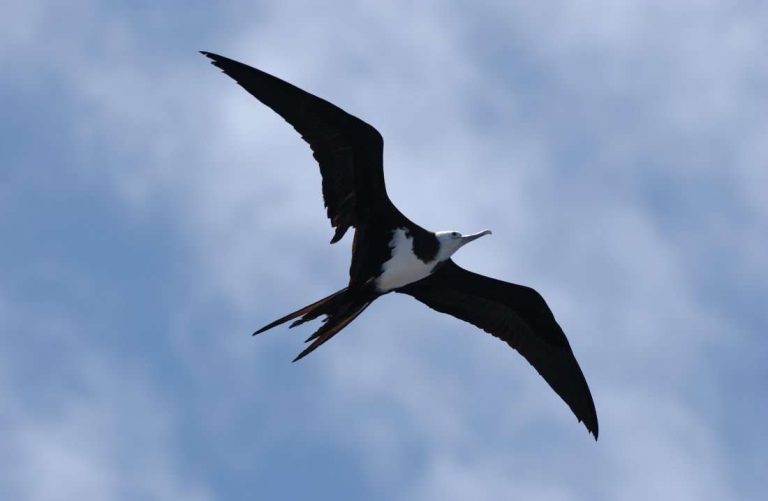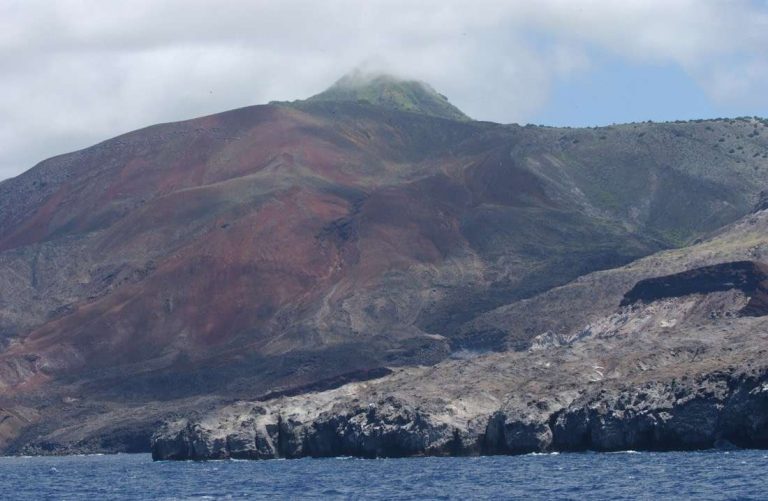Ascension Island: between ocean, volcanoes & nature
In the heart of the Atlantic Ocean, halfway between the coasts of Africa and South America, lies Ascension Island—a remote, wild, and little-known volcanic island, yet rich in charm and surprises.
For those embarking on an expedition cruise in search of unconventional destinations, Ascension represents an ideal stop: off the traditional tourist routes but full of history, nature, and unique attractions. Far from well-traveled paths, this island offers a unique combination of lunar landscapes, marine biodiversity, endemic wildlife, and traces of human presence that has adapted to the challenging environmental conditions.
Zodiac cruising around Ascension_ Hadoram Shirihai
Ascension Island is part of the British Overseas Territory of Saint Helena, Ascension, and Tristan da Cunha. Of volcanic origin, the island’s landscape is dominated by lava flows, extinct craters, and rugged coasts. The climate is dry, rainfall is scarce, and freshwater sources are practically nonexistent except in some mountainous areas where humidity condenses, creating moister microclimates. The highest point is Green Mountain, reaching approximately 850 meters in elevation, and it represents the island’s greenest and most vegetated area—a true oasis in an otherwise arid setting. Thanks to long-term environmental projects, vegetation here has grown over time, radically transforming what was once a desert-like landscape.
The island was discovered by the Portuguese in the early 1500s and remained uninhabited for centuries. It only became a strategic base for the British Navy in the 19th century, serving as a support point for oceanic routes and as a logistical hub. It has never had a stable civilian population in the traditional sense but has hosted military personnel, researchers, technicians, and staff for air and scientific bases.
From a naturalistic point of view, Ascension is a true treasure, especially regarding marine biodiversity. Its waters host an exceptionally rich ecosystem due to its geographic location and ocean currents that bring nutrients from different depths. Schools of tuna, marlin, tropical fish, manta rays, and, with some luck, dolphins and sea turtles can be spotted. Among these, the green turtle is the most emblematic species: every year, thousands of individuals return to Ascension’s beaches to lay their eggs, creating one of the island’s most fascinating natural spectacles.
Green Turtle, Ascension Island_ Rob Tully
Baby Green Turtle of Ascension_Hadoram Shirihai
The terrestrial fauna is dominated by seabirds. The island is one of the most important nesting sites for several species, including sooty terns, boobies, giant petrels, and the rare Ascension frigatebird (Fregata aquila), an endemic species that has returned to breed on the main island after decades thanks to conservation efforts. Other rare and vulnerable species are also present, and in many cases, visiting the island offers the chance to observe these animals up close in an unspoiled environment with minimal human disturbance.
The flora, although limited, is also noteworthy. Over the centuries, various exotic plant species were introduced in attempts to promote forest cover. This has led to the creation of a unique ecosystem, partly artificial but crucial for the survival of many local species. Mosses, lichens, heat- and drought-resistant shrubs alternate with tropical ferns and introduced plants, especially around Green Mountain, which also offers spectacular views of the entire island and the surrounding ocean.
Ascension Island offers numerous exploration opportunities. Onshore excursions include walks along volcanic coasts, wildlife observation, trekking to the island’s higher areas, and guided visits to historical sites. The black and golden beaches are among the most beautiful in the South Atlantic—some deserted and only swept by the wind, others frequented by turtles or bird colonies. Diving and snorkeling are highly appreciated activities, thanks to the clear waters and diverse seabeds: underwater canyons, submerged lava formations, and coral-populated reefs can be explored. The absence of mass tourism makes the experience even more authentic, creating the feeling of truly being in a remote corner of the planet.
Ascension Frigate Bird, Ascension Island_ Hadoram Shirihai
Ascension Island_Hadoram Shirihai
Access to Ascension Island is regulated by very strict environmental rules. It is one of the largest marine protected areas in the world, established to preserve the integrity of marine and coastal ecosystems. Tourist activities are limited and supervised, and each visit is planned to minimize environmental impact. The island’s climate is tropical oceanic, with relatively stable temperatures year-round but influenced by winds and strong ocean exposure. Weather conditions can change quickly, making some excursions challenging. However, this aspect is part of Ascension’s charm.
Ascension Island is a destination that leaves a lasting impression. What might seem like a simple stop in the middle of the ocean turns out to be a place full of contrasts where pristine nature, scientific research, and historical traces coexist. It is an island that invites careful observation, an understanding of the fragility of island ecosystems, and an appreciation for the beauty of less-explored places.
Don’t miss news, updates, and reviews about the world of cruising on Cruising Journal.

